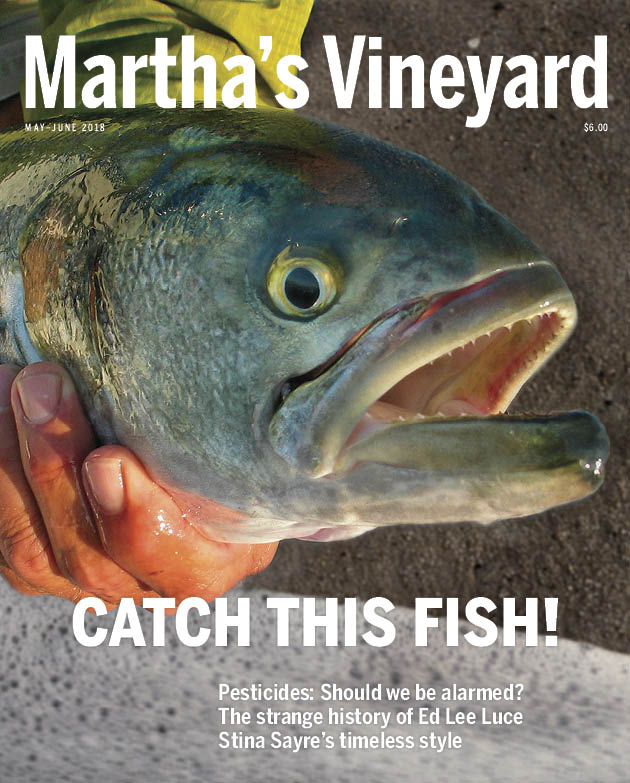 Most of us likely think of Martha’s Vineyard as an oasis of environmental sanity in a nation headed in the opposite direction. And with good reason. After all, more than 40 percent of the land on the Island is preserved in perpetuity in some form or another, with more added each year. That’s roughly twice the statewide
proportion of protected land and closer to three times the national and global figures. The land that remains vulnerable, meanwhile, is relatively strictly zoned, at least by national or global standards. There are regulations to keep new construction away from wetlands and running water, rules to protect fragile shorelines, density
restrictions, height restrictions, efficiency regulations.
Most of us likely think of Martha’s Vineyard as an oasis of environmental sanity in a nation headed in the opposite direction. And with good reason. After all, more than 40 percent of the land on the Island is preserved in perpetuity in some form or another, with more added each year. That’s roughly twice the statewide
proportion of protected land and closer to three times the national and global figures. The land that remains vulnerable, meanwhile, is relatively strictly zoned, at least by national or global standards. There are regulations to keep new construction away from wetlands and running water, rules to protect fragile shorelines, density
restrictions, height restrictions, efficiency regulations.
The Island’s environment and those of us lucky enough to live or visit here are also undeniably healthier than we might be thanks to the legacy of environmental measures adopted decades ago both nationally and at the state level. The Clean Air and Water Acts, the creation of the EPA, and the Magnuson-Stevens fishery act all come to mind. As does the Martha’s Vineyard Commission and the Land Bank.
Depending upon your priorities and your politics, and perhaps your economic situation, the amount of land protected may be inadequate, or it may be too much. The regulations may be insufficient, or they may be overbearing, outdated, wrongheaded. You may love plovers or curse them. You may wonder where all the herring and cod have gone, or you may ask why you can’t go dragging for fish you believe are out there where the scientists aren’t looking.
What’s good to remember is that nothing happened by accident, or in a vacuum, or without a campaign begun at first by lonely voices who were considered scolding cranks by the mainstream. As you’ll read in this issue in Alex Elvin’s story about the history of pesticide use on the Island, some Islanders were remarkably ahead of the curve in questioning the aerial spraying of DDT to which they were being subjected, while others were ordering up the helicopters.
It’s wise also to bear in mind that complacency cannot be regulated away. You’ll read in the same story that despite a host of unknowns about the role of herbicides in the global collapse of insect populations, Islanders continue to dose their properties with chemicals deemed just as “perfectly safe” as DDT once was. You’ll also read in Mary Breslauer’s analysis of traffic that 15 percent of the truck traffic on the boatline is hauling away our communal garbage.
“We stand now where two roads diverge,” wrote Rachel Carson more than a half-century ago in Silent Spring, the classic book that turned the tide on DDT. “The road we have long been traveling is deceptively easy, a smooth superhighway on which we progress at great speed, but at its end lies disaster. The other fork of the road, the one ‘less traveled by,’ offers our last, our only chance to reach a destination that assures the preservation of our earth. The choice, after all, is ours to make."




